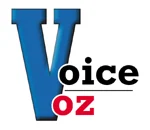District councils seek funding boost;
increased citizen engagement

District councils seek funding boost; increased citizen engagement
By Jake Spitzack | Staff Writer | August 2025
The roads your community will use for decades to come. Parks that the next generation of children in your city will enjoy. Local amenities residents desire to improve their quality of life. These are all things the City of St. Paul’s 17 district councils help shape by garnering community feedback on a variety of topic. To be successful in the future, however, district council leaders say they need more funding to cover rising costs of operation. Last fall they submitted a budget increase request to the City of St. Paul and are hopeful it will be approved in the 2026 budget, adopted by the end of the year.
District Council Program Coordinator Zoë Bourgerie recently submitted a formal proposal to the mayor’s office to increase funding next year by $259,000, bringing the total annual allocation to $1.7 million. In addition to garnering feedback from residents about city and state projects happening in their neighborhoods, district councils also create comprehensive 10-year plans based on what people want to see in their neighborhoods, and those plans are adopted into the City’s comprehensive plan.
Under the proposal, some councils are expected to get just a 2% increase in funding while others may get as much as 34%. Bourgerie said the district councils haven’t had a funding increase since it went up by $250,000 in 2019. The funding boost would help the primarily volunteer-run councils competitively hire qualified executive directors and improve overall community engagement efforts. Council leaders say low pay and high staff turnover have hindered the councils’ ability to maintain institutional knowledge about projects and create deep relationships within the community.
The West Side Community Organization is penciled in for about a 6% boost, from $75,822 to $80,695. Likewise, the CapitolRiver Council (CRC), which oversees downtown St. Paul, could get about a 19% increase, from $62,922 to $75,049. After the bump, the lowest annual allocations per council would be $75,049, given to the West Seventh/Fort Road Federation, Hamline Midway Coalition, St. Anthony Park Community Council, Summit Hill Association, and CRC. The highest would be $181,966, earmarked for the Payne-Phalen Community Council. Allocations are determined by a weighted formula that accounts for community demographics including population, poverty, diversity and employment.
Hot off the Press Newsletter!
One email a month with top stories from our four publications.
Sign up on our home page HERE.
According to spokespeople from the CRC, the most common ways their council engages the community is through free social media efforts, hosting public committee meetings and distributing flyers in residential buildings especially where digital access is limited. They said large-scale mailings are rare due to the cost, and that targeted outreach, especially in person or through trusted community leaders and partner organizations, tends to be more effective at building strong relationships with community members. WSCO was contacted multiple times but did not respond. Currently, WSCO is working on helping influence the design of a major Robert Street reconstruction project, which may begin as soon as 2026. Likewise, the CRC is working on helping the community engage with the City’s work to create a Downtown Streets and Sidewalks Plan.
“We are incredibly grateful for the City’s proposal to increase funding for district councils, including CapitolRiver Council,” said CRC Board Chair Haley Taylor Schlitz. “It reflects a recognition of the essential role we play in helping community voices be heard in local decision-making. Meaningful, sustained community engagement is challenging, especially in a downtown setting with a mix of people with very different interests and perspectives. Consistent outreach is important, and we need to create an environment that is respectful and constructive, so that people not only feel invited
into the process but also feel heard once they show up…. We are proud of what we have built so far, and we know there is more to do. With increased support, we can deepen our engagement, expand our reach, and create a more connected downtown.”
This is the second shine-up St. Paul district councils are slated to receive this year. In April, the St. Paul City Council approved $1.4 million from its 2024 Economic Development STAR fund to create the Commerical Corridor Organization Assistance Program. Through it, district councils can apply to receive up to $81,500 per year for projects that spur economic development, such as corridor-wide beautification, public art installations, business sub-grants, hosting community events that celebrate and showcase the corridor, and corridor marketing campaigns. The proposed budget increase is in addition to funds they can receive through the program.
Support community news – strengthen your community.
Join the many loyal readers who have made a voluntary contribution of $10 to $100 or more to
help us achieve our purpose. Our website is paywall free, and papers are delivered monthly to
every home in our distribution area. Thank you for your support!
-
New women’s hockey exhibit at Lawshe Museum
-
Top priorities laid out for skyway revitalization
-
Playing with Bones: Artist blends fact and fiction with ‘ancient’ creations
-
‘West Sider of the Year’ and ‘Business of the Year’ honored by West Side Community Organization
-
Bouldering Project now open on West Side
-
Holiday Event Guide 2025

Timeless articles
celebrating our community
People | History | Nature
Follow us!
Ticket Giveaways
Event Reminders
Expanded Coverage

















